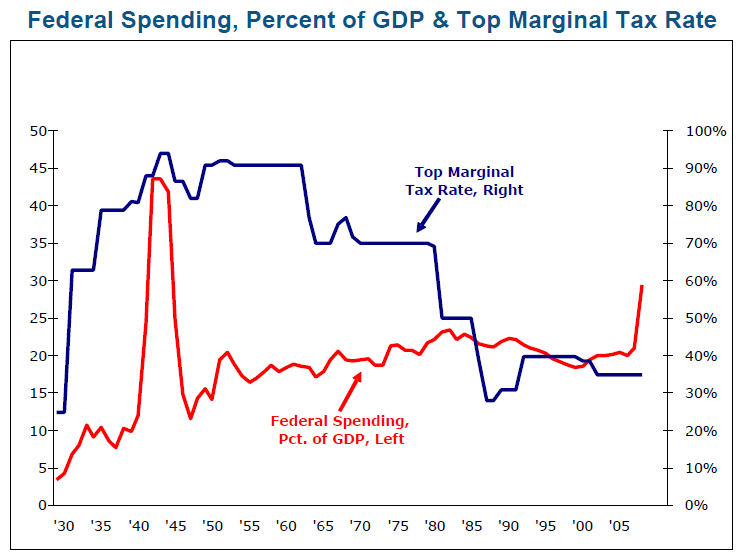Marginal tax rate
Post on: 25 Май, 2015 No Comment

Marginal tax rate is the tax rate that applies to the last dollar of the tax base (taxable income or spending), and often applied to the change in one’s tax obligation as income rises. An individual’s tax bracket is the range of income for which a given marginal tax rate applies. [note 1] [note 2]
(In investing, the word margin is the same as additional. To say it another way, this is the tax rate you would pay for each additional dollar earned. [1] )
The rate also indicates how much tax you would save on each dollar of income that does not need to be reported on your tax return.
Marginal tax rates do not fully describe the impact of taxation. A tax is progressive if marginal rates increase with the tax base, and regressive if marginal rates decrease. In the US, income taxes are progressive, and thus the fraction of your income that you pay in taxes is less than your marginal tax rate.
Contents
Calculation
To calculate a marginal income tax rate, consider how much additional tax you would owe if you added $1 to your income. For example, if your federal tax bracket is 25%, your state tax bracket is 8%, and you do not itemize deductions, an extra $1 of income would cause you to pay 8 cents in state tax and 25 cents in federal tax, so your marginal rate is 33%. If you do itemize, the 8 cents in state taxes mean that you pay federal tax on only 92 cents, which is 23 cents of federal tax (23% = 92 cents * 25%) and a marginal rate of 31% = (23% + 8%).
Note that you may have a different marginal tax rate on different types of income. In the example above, your marginal tax rate on Treasury bonds (which are fully taxed by federal, not taxed by the state) is 25%. Your marginal tax rate on capital gains (which are taxed by the federal government at 15% but are probably still taxed at the full state rate) is 21% = (15% + 8%, minus the 2% = (8% * 25%) for the federal deduction of the state taxes).
The actual marginal rate can be complicated if your taxes include credits, deductions, and exemptions which are phased out with income; if you are nominally in the 25% bracket but you lose $5 in tax credits for every additional $100 you earn, your marginal rate is actually 30%.
If you use tax software, you can compute your actual marginal rate by adding $1000 to some category of your income and looking at the change in your tax bill; you may need to make a small adjustment for the deductibility of state taxes, as a higher state tax this year will give you a federal tax deduction next year.
Common examples of high marginal rates
Taxation of Social Security benefits causes many moderate-income retirees to be subject to a much higher marginal tax rate than their tax bracket. If you are in the range in which Social Security becomes taxable, each additional $1 of income causes an extra 50 or 85 cents of Social Security to be taxable at the same tax rate, until 85% of the whole benefit is taxable. If you are in the 15% bracket and each $1 causes an extra 85 cents to be taxable, that extra $1 of income increases your taxable income by $1.85, with 27.75 cents due in tax giving you a marginal tax rate of 27.75%. If you are in the 25% bracket and each $1 causes 85 cents to be taxable, your marginal tax rate is 46.25%.

Another unusually high marginal rate is the result of the 0% tax rate on qualified dividends and capital gains at low incomes. There is a taxable-income level X which is the top of the 15% bracket. Ordinary taxable income up to X is taxed at a marginal rate of 15%, and ordinary income above X is taxed at a marginal rate of 25%. Qualified dividends and capital gains are then added to your ordinary taxable income; the amount which is still below X is taxed at 0%, and the amount above X is taxed at 15%. Thus, if your ordinary-taxable income is less than X but your total taxable income is more than X, your marginal tax rate is 30%. Every additional $1 of ordinary income is below X and thus taxed at 15%, but it also moves $1 of qualified dividends from below X to above X, and that $1 is now taxed at 15% rather than 0%.
Using the marginal rate for investment decisions
The marginal tax rate determines the relative after-tax value of different investments. If your marginal federal tax rate is 25%, then a corporate bond fund with a 4% yield and a municipal bond fund with a 3% yield have the same after-tax value to you. It is important to use the marginal tax rate for the appropriate type of income; if the municipal bond fund is from your own state and is exempt from the 8% state tax as well, then you have a 31% marginal tax rate on the corporate fund and 0% on the municipal fund, and thus the municipal fund has a better after-tax yield.
Special cases
Marginal rate of zero
A tax with a marginal rate of zero is a fixed-amount tax, such as a tax of $100 on every house rather than a percentage of the value of the house.














